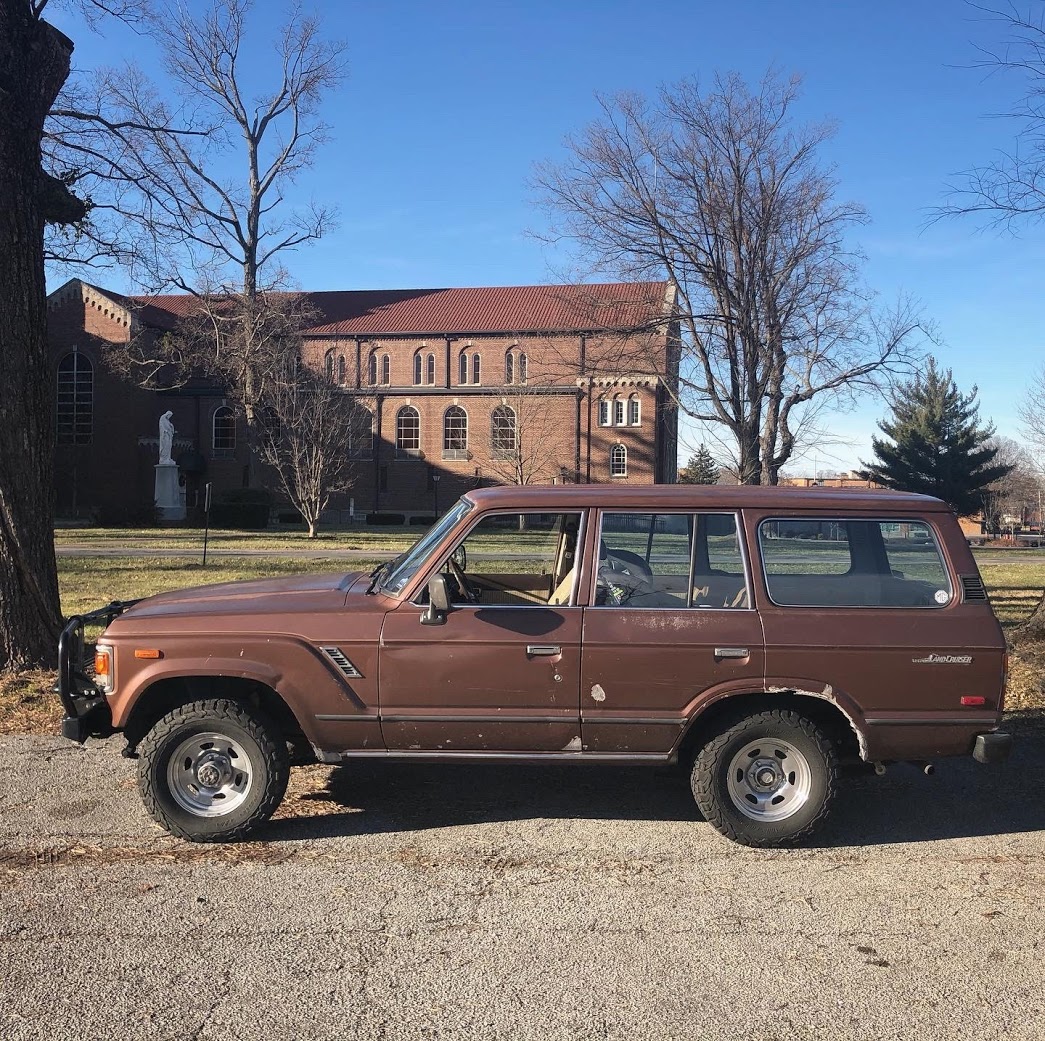Lift kit. Second worst job I've done on this Cruiser (worst being the C-Channels). Removal of the old stuff was the worst, particularly the hanger pins.... I would also highly recommend having a helper along for the ride. Being alone I had to do some creative Macgyver stuff with a couple ratchet straps that I'm pretty proud of. Unfortunately I wasn't in the state of mind to photograph it.... It was 1AM at this point...
Somehow I talked my wife into letting me order the OME 2.5 Light Duty lift. You know, safety reasons!
Here's a quick before and after:
I hope the rear settles down a little. Unfortunately the tires are almost new! I'm going to live with the stock size a bit longer. It's growing on me!
Planning ahead I had been soaking the spring pins and shackles with PB Blaster periodically for a couple of months. While the retainer nuts came off easily this seemingly did NOTHING for the fused rubber and pins.
Luckily I only had 1/4 of the work finished, I previously fought the rear shackles with the C-Channel job and had new greaseable shackles installed which were easily removed. Since the old springs were garbage I cut the front shackles and focues on removing the shackle and pin from the frame portion.
I apologize for these dark photos.
The spring pins (fixed side) did not want to budge. Finally after incessant pounding with an 8 LB sledge I just went for the cut off wheel. Should have done this sooner. Cut each side of the pin (inside the frame bracket and outside the spring) which allowed the spring to drop free. Again, I wasn't worried about the old springs.
The u-bolts came off easily as well.
Getting the drivers side out was pulling the band-aid off. Now i had a plan of action for the other three corners.
Front springs went on easily.
Rears. Again, spring hangers were a bear. Cut off wheel to the rescue but at one point (with the hand guard removed) I accidentally used my right thumb to slow it down... OUCHIE. Only takes a millisecond of a millisecond to cut through leather, rubber and skin.
Cleaned it, taped it up and back at it!
The MacGyver stuff was trying to get the rear spring alignment pins into the rear axle. The passenger side just needed to come out. I hooked a ratchet strap to the wheel on my MG next to me and pulled it into place. POP! all good. The Driver's side needed to come forward and out. For this I used two ratchet straps. one up to the frame around the drum and another around the spring and draw to pull it out.
I pulled the axle forward until I could see the alignment was correct then pulled the spring out and POP! Dang that's satisfying. Everything else went together easily. I almost left driver's rear shock off as well as the steering dampener. I finished at about 3AM.
I bough new OEM spring pads for the rear from Toyota and re-used the U shaped alignment piece. I'm wondering if that's a little bit of my "stink bug" look....
Long story short, this job requires a strong back, lots of beer and it took me about 8 hours start to finish.
The ride quality is amazing. Dropping it off for an alignment tomorrow and we should be good to go.
I do have aftermarket brake lines and the rear is stretched just a bit more than I'm comfortable with at full droop so I will be sourcing longer ones. Any recommendations?












































